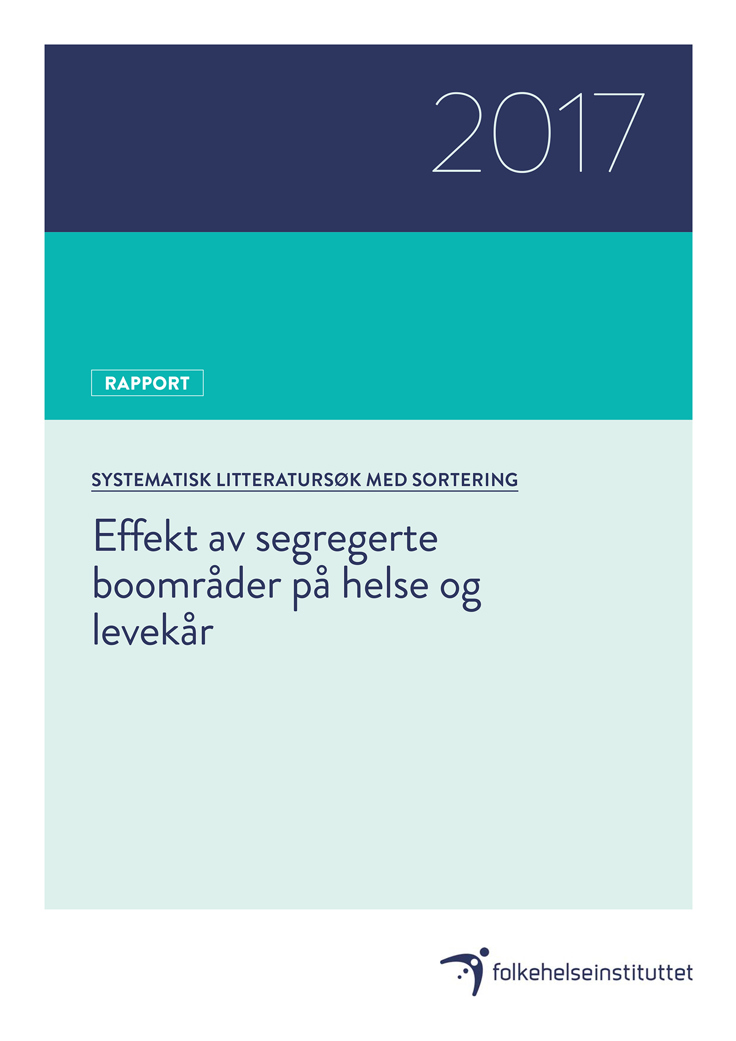Effect of residential segregation on health and quality of life: Systematic literature search with sorting
Mapping review
|Published
We were commissioned to identify reviews on the effect of and experiences with residential segregation or neighbourhoods characterized by material or social disadvantage.
Download
Key message
The unit for Social Welfare Services in the Division for Health Services at the Norwegian Institute for Public Health was commissioned by The Directorate of Integration and Diversity and the Norwegian State Housing Bank to identify reviews on the effect of and experiences with residential segregation or neighbourhoods characterized by material or social disadvantage.
Methods
We conducted a systematic literature search with sorting of potentially relevant publications. In April 2017, a librarian carried out a literature search in relevant databases. Two researchers screened all references and assessed whether they met the pre‐defined inclusion criteria. We assessed the methodological study quality, extracted data and sorted the included systematic reviews according to population and outcome.
Results
We included 99 reviews: 8 systematic review and 91 non-systematic reviews. Most of the systematic reviews had moderate or high methodological quality. Altogether, they included 533 primary studies.
The systematic reviews examined the effect of neighbourhoods disadvantage for: children and youth (4 reviews), adults (2 reviews), older adults (1 review) or mothers and children (1 review). They included outcomes related to physical and mental health, use of health services, and health related behaviours such as smoking and use of alcohol. None of the included reviews looked at perspectives or preferences related to living in segregated neighbourhoods.
The results from the eight systematic reviews suggest that there is a clear link between neighbourhood disadvantage and physical and mental health, use of health services, and health related behaviours. However, several of the systematic reviews underlined that the results are tentative, given the studies’ methodological limitations, and that there is a need for additional research.


